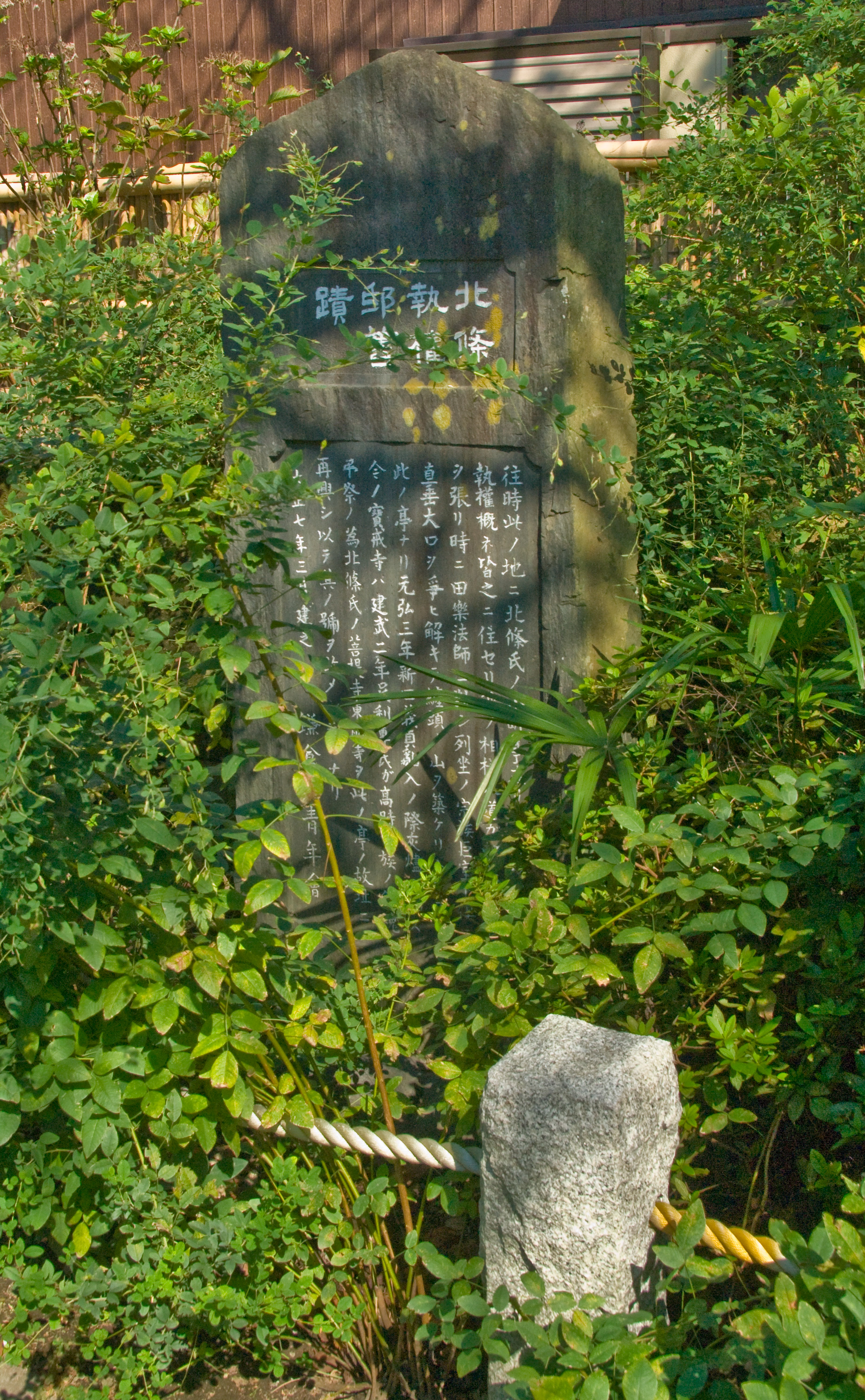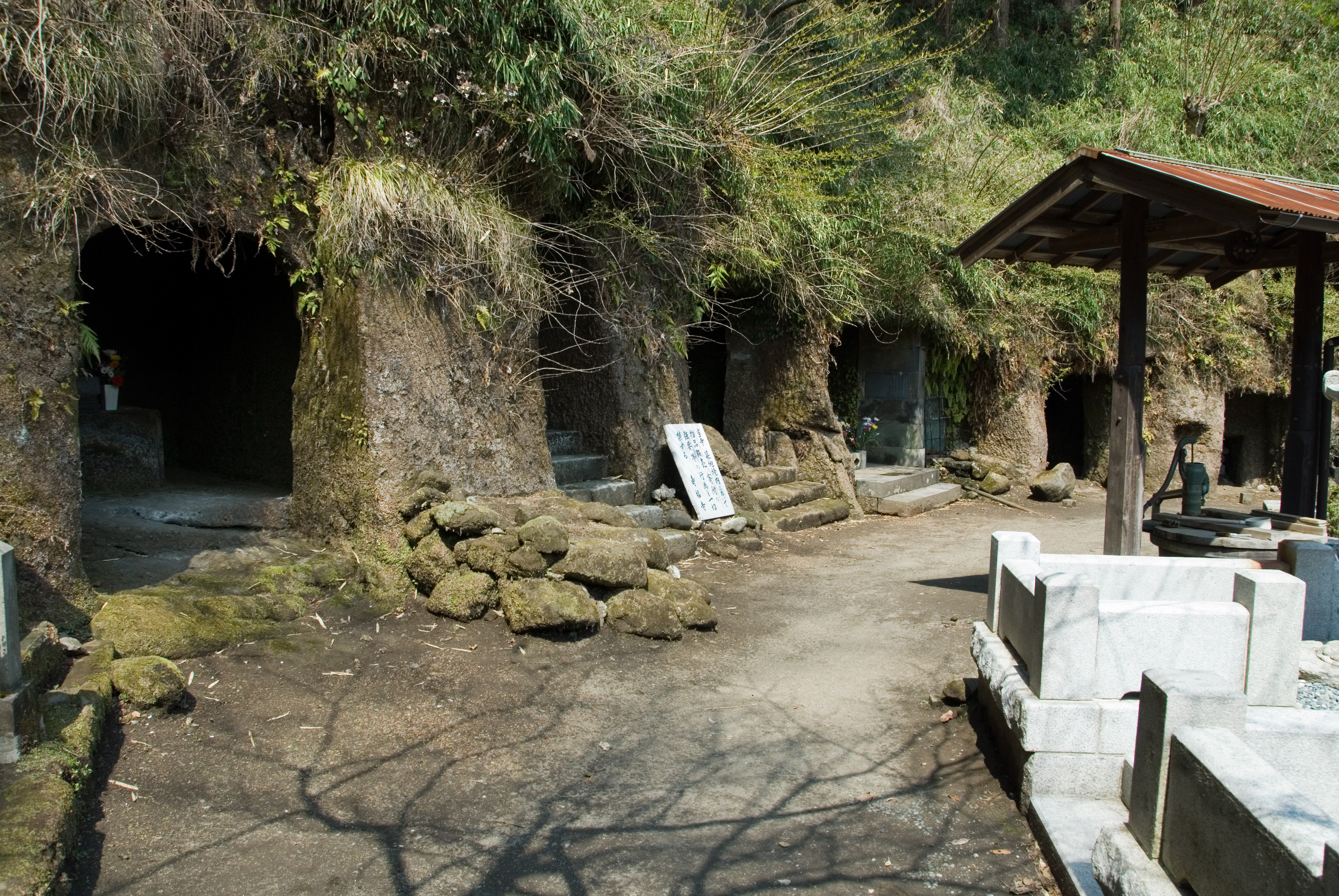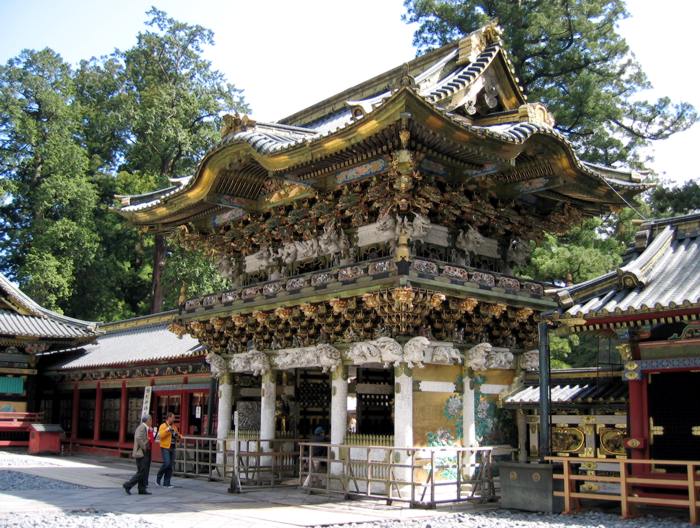|
Tōshō-ji
was the Hōjō clan's family temple (''bodaiji'') in Kamakura during the Kamakura period. Its founder was Taikō Gyōyū and it was constructed in 1237 by Hōjō Yasutoki in memory of his mother, who had her tomb there. According to the Taiheiki, from its foundation until the end of the Kamakura shogunate every regent (''shikken'') was buried there. The temple no longer exists, since it was set on fire by the Hōjō themselves when the entire family committed suicide after Nitta Yoshisada's invasion of Kamakura on July 4, 1333. Its ruins were found in the Kasaigayatsu valley in today's Ōmachi.Kamiya Vol. 1 (2006/08: 53- 55) Tōshō-ji very probably used to occupy the entire valley. Standing at the top of a narrow valley shut off at its base by the Nameri river's deep gorge and by steep hills on the other three sides, and besides offering a clear view of the only road that crossed the river, it was a fortress surely valuable to the family also from the military point of view. ... [...More Info...] [...Related Items...] OR: [Wikipedia] [Google] [Baidu] |
Hōkai-ji (Kamakura)
is a Buddhist temple in Kamakura, Kanagawa, Kamakura, Kanagawa Prefecture, Japan. Often called , or "bush-clover temple", because those flowers are numerous in its garden, its existence is directly linked to a famous tragedy that on July 4, 1333 wiped out almost the entire Hōjō clan, ruler of Japan for 135 years. The temple was founded expressly to enshrine the souls of the 870 members (men, women and children) of the clan who, in accordance with the samurai code of honor, committed suicide on that day at their family temple (''bodaiji'') of Tōshō-ji to escape defeat.Shirai (261:1976) Together with ancient Sugimoto-dera, Hōkai-ji is the only temple of the Tendai denomination in Kamakura. Formerly a of the great Kan'ei-ji (one of the two Tokugawa family temples), after its destruction it became a branch of Enryaku-ji. History The temple of Tōshō-ji was built in 1237 by Hōjō Yasutoki in memory of his mother and, according to the ''Taiheiki'', from its foundation until the ... [...More Info...] [...Related Items...] OR: [Wikipedia] [Google] [Baidu] |
Kamakura, Kanagawa
is a city in Kanagawa Prefecture, Japan. Kamakura has an estimated population of 172,929 (1 September 2020) and a population density of 4,359 persons per km² over the total area of . Kamakura was designated as a city on 3 November 1939. Kamakura was the ''de facto'' capital of Japan from 1185 to 1333 as the seat of the Kamakura Shogunate, and became the nation's most populous settlement during the Kamakura period. Kamakura is a popular domestic tourist destination in Japan as a coastal city with a high number of seasonal festivals, as well as ancient Buddhist and Shinto shrines and temples. Geography Surrounded to the north, east, and west by hills and to the south by the open water of Sagami Bay, Kamakura is a natural fortress. Before the construction of several tunnels and modern roads that now connect it to Fujisawa, Ofuna ( ja) and Zushi, on land it could be entered only through narrow artificial passes, among which the seven most important were called , a name some ... [...More Info...] [...Related Items...] OR: [Wikipedia] [Google] [Baidu] |
Yagura (tombs)
are artificial caves used during the Middle Ages in Kamakura, Kanagawa Prefecture, Japan, as tombs and cenotaphs.Kamakura Shōkō Kaigijo, (2008, 35–38)Kawano (2005: 171) It is likely that they were used only as tombs in the beginning, and were later used as cenotaphs. The dead are mostly from the samurai class, but the names of priests and artisans have also been found.Kawano (2005: 173) These tombs are extremely numerous in the hills surrounding Kamakura, and estimates of their number range from 1,500 to over 5,000. The total number will remain unknown, as many have been destroyed and others may not yet have been found. ''Yagura'' can be found either isolated, as in the case of the ''Harakiri Yagura'', or in clusters of almost 200 caves.A Guide to Kamakura, ''Terminology'' Groups of yagura are labeled with the suffix . The most conveniently seen ''yagura'' for most tourists are those at Jufuku-ji, near Kamakura station. Its cemetery has many yagura, including those with the cen ... [...More Info...] [...Related Items...] OR: [Wikipedia] [Google] [Baidu] |
Namerigawa
The is a river that goes from the Asaina Pass in northern Kamakura, Kanagawa to the beach in Yuigahama, for a total length of about 8 km. Although Yuigahama is in fact the name of the entire 3.2 km beach that goes from Inamuragasaki to Zaimokuza's Iijima cape, the name is usually used just for its half west of the Namerigawa river's estuary, while the eastern half is called .Kamakura Shōkō Kaigijo (2008:33) The name comes from the way it flows, kind of "licking" ("nameru" in Japanese) the stones at its bottom. Only during the summer, during the bathing season, the river's estuary is crossed by a wooden bridge (in the photo). Although very short, the river is called by locals with six different names according to the neighborhood it crosses. From the Asaina Pass to Jōmyō-ji it's about a meter wide and is called . After the temple's gate it takes the name Namerigawa, becomes wider and follows the course of the Kanazawa Road. Near the Omidōbashi Bridge it changes na ... [...More Info...] [...Related Items...] OR: [Wikipedia] [Google] [Baidu] |
Bodaiji
A in Japanese Buddhism is a temple which, generation after generation, takes care of a family's dead, giving them burial and performing ceremonies in their soul's favor.Iwanami kojien The name is derived from the term , which originally meant just Buddhist enlightenment (satori), but which in Japan has also come to mean either the care of one's dead to ensure their welfare after death or happiness in the beyond itself. Several samurai families including the Tokugawa had their ''bodaiji'' built to order, while others followed the example of commoners and simply adopted an existing temple as family temple. Families may have more than one ''bodaiji''. The Tokugawa clan, for example, had two, while the Ashikaga clan had several, both in the Kantō and the Kansai areas. Some famous ''bodaiji'' *The Hōjō clan's Tōshō-ji in Kamakura (Kamakura period) (destroyed in 1333) *The Hōjō clan's Hōkai-ji in Kamakura (Muromachi period) *The Ashikaga's Tōji-in in Kyoto (Muromachi perio ... [...More Info...] [...Related Items...] OR: [Wikipedia] [Google] [Baidu] |
Kamakura Shogunate
The was the feudal military government of Japan during the Kamakura period from 1185 to 1333. Nussbaum, Louis-Frédéric. (2005)"''Kamakura-jidai''"in ''Japan Encyclopedia'', p. 459. The Kamakura shogunate was established by Minamoto no Yoritomo after victory in the Genpei War and appointing himself as ''shōgun''. Yoritomo governed Japan as military dictator from the eastern city of Kamakura with the emperor of Japan and his Imperial Court in the official capital city of Heian-kyō (Kyoto) as figureheads. The Kamakura ''shōguns'' were members of the Minamoto clan until 1226, the Fujiwara clan until 1252, and the last six were minor princes of the imperial family.Nussbaum"Minamoto"at pp. 632–633. The Hōjō clan were the ''de facto'' rulers of Japan as ''shikken'' (regent) of the ''shōgun'' from 1203.Nussbaum"Fujiwara"at pp. 200–201. The Kamakura shogunate saw the Jōkyū War in 1221 and the Mongol invasions of Japan under Kublai Khan in 1274 and 1281. The Kamaku ... [...More Info...] [...Related Items...] OR: [Wikipedia] [Google] [Baidu] |
Go-Daigo
Emperor Go-Daigo (後醍醐天皇 ''Go-Daigo-tennō'') (26 November 1288 – 19 September 1339) was the 96th emperor of Japan,Imperial Household Agency (''Kunaichō'')後醍醐天皇 (96) retrieved 2013-8-28. according to the traditional order of succession. He successfully overthrew the Kamakura shogunate in 1333 and established the short lived Kenmu Restoration to bring the Imperial House back into power. This was to be the last time the emperor had real power until the Meiji Restoration in 1868.Sansom 1977: 22–42. The Kenmu restoration was in turn overthrown by Ashikaga Takauji in 1336, ushering in the Ashikaga shogunate, and split the imperial family into two opposing factions between the Ashikaga backed Northern Court situated in Kyoto and the Southern Court based in Yoshino led by Go-Daigo and his later successors. This 14th-century sovereign personally chose his posthumous name after the 9th-century Emperor Daigo and ''go-'' (後), translates as "later", and he is thus ... [...More Info...] [...Related Items...] OR: [Wikipedia] [Google] [Baidu] |
Muromachi Period
The is a division of Japanese history running from approximately 1336 to 1573. The period marks the governance of the Muromachi or Ashikaga shogunate (''Muromachi bakufu'' or ''Ashikaga bakufu''), which was officially established in 1338 by the first Muromachi ''shōgun'', Ashikaga Takauji, two years after the brief Kenmu Restoration (1333–1336) of imperial rule was brought to a close. The period ended in 1573 when the 15th and last shogun of this line, Ashikaga Yoshiaki, was driven out of the capital in Kyoto by Oda Nobunaga. From a cultural perspective, the period can be divided into the Kitayama and Higashiyama cultures (later 15th – early 16th centuries). The early years from 1336 to 1392 of the Muromachi period are known as the '' Nanboku-chō'' or Northern and Southern Court period. This period is marked by the continued resistance of the supporters of Emperor Go-Daigo, the emperor behind the Kenmu Restoration. The Sengoku period or Warring States period, which begi ... [...More Info...] [...Related Items...] OR: [Wikipedia] [Google] [Baidu] |
Buddhist Temples In Kamakura, Kanagawa
Buddhism ( , ), also known as Buddha Dharma and Dharmavinaya (), is an Indian religions, Indian religion or Indian philosophy#Buddhist philosophy, philosophical tradition based on Pre-sectarian Buddhism, teachings attributed to the Buddha. It originated in History of India, northern India as a -movement in the 5th century BCE, and Silk Road transmission of Buddhism, gradually spread throughout much of Asia via the Silk Road. It is the Major religious groups, world's fourth-largest religion, with over 520 million followers (Buddhists) who comprise seven percent of the global population. The Buddha taught the Middle Way, a path of spiritual development that avoids both extreme asceticism and hedonism. It aims at liberation from clinging and craving to things which are impermanent (), incapable of satisfying ('), and without a lasting essence (), ending the cycle of death and rebirth (). A summary of this path is expressed in the Noble Eightfold Path, a Bhavana, training of t ... [...More Info...] [...Related Items...] OR: [Wikipedia] [Google] [Baidu] |
Glossary Of Japanese Buddhism
This is the glossary of Japanese Buddhism, including major terms the casual (or brand-new) reader might find useful in understanding articles on the subject. Words followed by an asterisk (*) are illustrated by an image in one of the photo galleries. Within definitions, words set in boldface are defined elsewhere in the glossary. __NOTOC__ A * ''agyō''* (阿形) – A type of statue (of a Niō, komainu, etc.) with its mouth open to pronounce the sound "a", first letter of the Sanskrit alphabet and symbol of the beginning of all things. See also ''ungyō''. * Amida Nyorai (阿弥陀如来) – Japanese name of Amitabha, deity worshiped mainly by the Pure Land sect.''Kōjien Japanese dictionary'' * – A Hermitage. * arhat – see arakan. * ''arakan*'' (阿羅漢) – the highest level of Buddhist ascetic practice, or someone who has reached it. The term is often shortened to just ''rakan'' (羅漢). B *bay – see ken. *''bettō'' (別当) – Previously the title of t ... [...More Info...] [...Related Items...] OR: [Wikipedia] [Google] [Baidu] |
Gorintō
("five-ringed tower") is a Japanese type of Buddhist pagoda believed to have been first adopted by the Shingon and Tendai sects during the mid Heian period. It is used for memorial or funerary purposesKōjien Japanese Dictionary and is therefore common in Buddhist temples and cemeteries. It is also called ("five-ringed stupa") or , where the term ''sotoba'' is a transliteration of the Sanskrit word stupa. The stupa was originally a structure or other sacred building containing a relic of Buddha or of a saint, then it was gradually stylized in various ways and its shape can change quite a bit according to the era and to the country where it is found.Home Study Course on Basic Buddhism Often offertory strips of wood with five subdivisions and covered with elaborate inscriptions also called ''sotoba'' can be found at tombs in Japanese cemeteries (see photo below). The inscriptions contain sūtra and the posthumous name of the dead person. These can be considered stupa variants. St ... [...More Info...] [...Related Items...] OR: [Wikipedia] [Google] [Baidu] |
Gongen
A , literally "incarnation", was believed to be the manifestation of a buddha in the form of an indigenous kami, an entity who had come to guide the people to salvation, during the era of shinbutsu-shūgō in premodern Japan.Encyclopedia of Shinto''Gongen''accessed on October 5, 2008Tamura (2000:87) The words and are synonyms for gongen. is the term for belief in the existence of gongen. The gongen concept is the cornerstone of the honji suijaku theory, according to which Buddhist deities choose to appear to the Japanese as native kami in order to save them, which is based on the Mahayana Buddhist notion of upaya, "expedient means". History It is sometimes assumed that the word ''gongen'' derives from Tokugawa Ieyasu's posthumous name (Tōshō Daigongen). However, the term was created and started being used in the middle of the Heian period in an effort to harmonize Buddhism and indigenous religious practice in what is called shinbutsu-shūgō or "syncretism of kami and bud ... [...More Info...] [...Related Items...] OR: [Wikipedia] [Google] [Baidu] |








